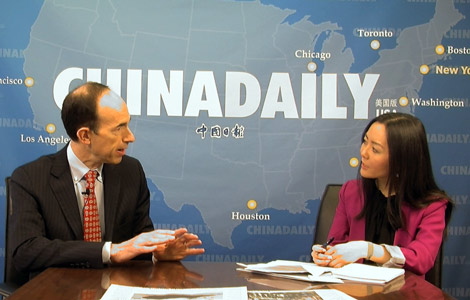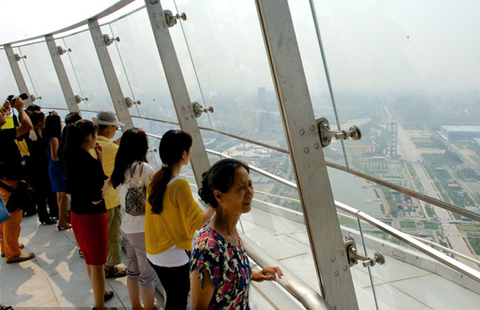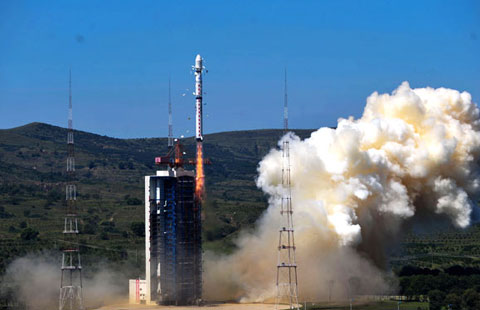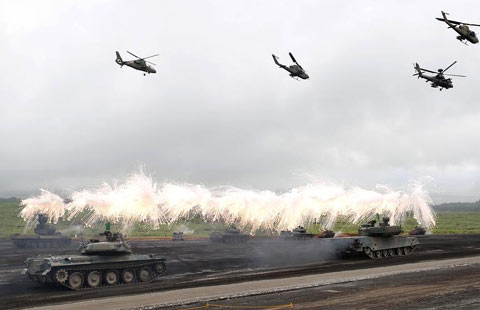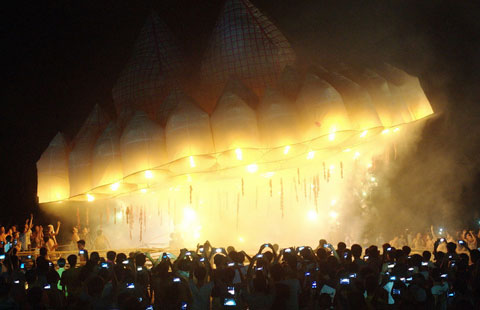Recovery of bodies suspended at Japanese volcano
Updated: 2014-09-29 14:23
(Agencies)
|
||||||||
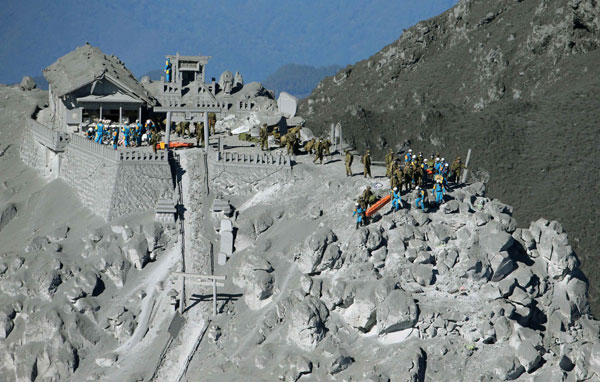 |
|
Japan Self-Defense Force (JSDF) soldiers and police officers prepare a rescue operation near the peak of Mount Ontake, which straddles Nagano and Gifu prefectures, central Japan September 29, 2014, in this photo taken and released by Kyodo. Thirty-one people were presumed dead on Sunday near the peak of the Japanese volcano that erupted on Saturday, catching hundreds of hikers unawares as it belched out clouds of rock and ash. [Photo/Agencies] |
KISO, Japan - Japanese soldiers managed to bring down eight more bodies by helicopter from the ash-blanketed peak of a still-erupting volcano on Monday, before toxic gases and ash forced them to suspend the recovery effort in the early afternoon.
At least 31 people are believed to have died. Four victims were flown down Sunday, and rescuers had returned to 3,067-meter (10,062-foot) Mt. Ontake to try to recover the remaining 27. Exactly how they died remains unclear, whether from gases, suffocating ash, falling rocks or other causes.
Scenes broadcast live on Japanese TV station TBS showed soldiers carrying yellow body bags one-by-one to a camouflage military helicopter that had landed in a relatively wide-open area of the now bleak landscape, its rotors still spinning.
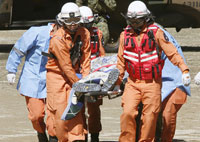 |
The bodies were then taken to a small, two-story wooden elementary school in the nearby town of Kiso, where they were being examined in the gymnasium.
Family members of the missing waited at a nearby municipal hall.
More than 200 soldiers and firefighters, including units with gas-detection equipment, were part of the search mission near the peak, said Katsunori Morimoto, an official in the village of Otaki.
The effort was halted because of an increase in toxic gas and ash as the volcano continued to spew fumes, he said. "It sounds like there is enormous ashfall up there."
Some rescue workers near the summit had retreated to lower areas to stand by. The rescuers reported a strong smell of sulphur earlier this morning, Morimoto said.
The four brought down Sunday have been confirmed dead, said Takehiko Furukoshi, a Nagano prefecture crisis-management official.
The 27 others are listed as having heart and lung failure, the customary way for Japanese authorities to describe a body until police doctors can examine it.
Saturday's eruption was the first fatal one in modern times at Mount Ontake, a popular climbing destination 210 kilometers (130 miles) west of Tokyo on the main Japanese island of Honshu. A similar eruption occurred in 1979, but no one died.
Japanese media reported that some of the bodies were found in a lodge near the summit and that others were buried in ash up to 50 centimeters (20 inches) deep. Police said only two of the four confirmed dead had been identified. Both were men, ages 23 and 45.
Mount Ontake erupted shortly before noon at perhaps the worst possible time, with at least 250 people taking advantage of a beautiful fall Saturday to go for a hike. The blast spewed large white plumes of gas and ash high into the sky, blotted out the midday sun and blanketed the surrounding area in ash.
Hundreds were initially trapped on the slopes, though most made their way down by Saturday night.
About 40 people who were stranded overnight came down on Sunday. Many were injured, and some had to be rescued by helicopters or carried down on stretchers. By nightfall, all the injured had been brought down, officials said.
Japan's Fire and Disaster Management Agency tallied 40 injured people, three seriously, and said it was trying to update the number still missing.
Survivors told Japanese media that they were pelted by rocks. One man said he and others went into the basement of a lodge, fearing that the rocks would penetrate the roof. He covered himself with a futon, a thin Japanese mattress, for protection.
"Even small eruptions can cause major damage if people are around, as they get hit by rocks that come flying," Nagoya University volcanologist Koshun Yamaoka said at a news conference Sunday.
Volcanoes can also kill by spewing toxic gases and lung-choking ash.
Shinichi Shimohara, who works at a shrine at the foot of the mountain, said he was on his way up Saturday morning when he heard a loud noise that sounded like strong winds followed by "thunder" as the volcano erupted.
- Traffic jams cost Beijing 70b yuan a year
- 26 arrested for attacking govt building
- China bans tourism disguised as government business
- China urges to restart Six Party Talks as soon as possible
- China calls for concerted efforts to seek peace in Middle East
- FM calls for more global assistance as Ebola epidemic rages
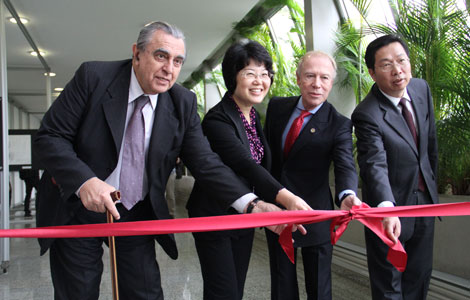
 Brazilian eyes
Brazilian eyes
 National Day Celebration
National Day Celebration
 Splendid China
Splendid China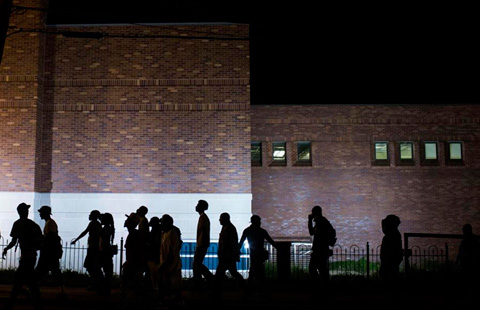
 Police: Ferguson officer shot; 2 suspects wanted
Police: Ferguson officer shot; 2 suspects wanted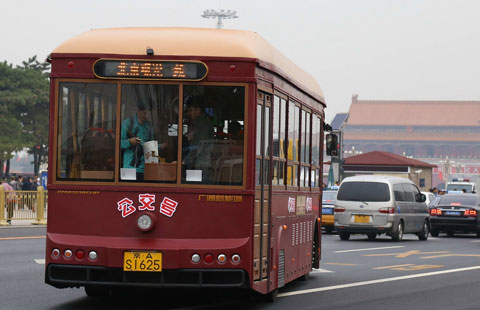
 Beijing welcomes its vintage tour bus
Beijing welcomes its vintage tour bus
 Mo Yan awarded highest honor of oldest Bulgarian university
Mo Yan awarded highest honor of oldest Bulgarian university
 Hundred Flowers Award ceremony opens in Lanzhou
Hundred Flowers Award ceremony opens in Lanzhou
 Luxurious new Boeing 777 delivered to China Eastern
Luxurious new Boeing 777 delivered to China Eastern
Most Viewed
Editor's Picks

|

|

|

|

|

|
Today's Top News
15 people, mostly teens, shot at Miami nightclub
Currency swap potential boon to Argentia
Sino-Venezuela ties at 'highest level'
FM makes official visit to Mexico
Brazil, China exchanges ink deal
VCs gather in Silicon Valley
Police: Ferguson officer shot; 2 suspects wanted
Central govt opposes illegal activities in HK
US Weekly

|

|

